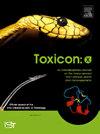Diagnosis of human envenoming by terrestrial venomous animals: Routine, advances, and perspectives
IF 2.8
Q2 TOXICOLOGY
引用次数: 0
Abstract
Despite the development of new and advanced diagnostic approaches, monitoring the clinical evolution of accidents caused by venomous animals is still a challenge for science. In this review, we present the state of the art of laboratory tests that are routinely used for the diagnosis and monitoring of envenomings by venomous animals, as well as the use of new tools for more accurate and specific diagnoses. While a comprehensive range of tools is outlined, comprising hematological, biochemical, immunoassays, and diagnostic imaging tools, it is important to acknowledge their limitations in predicting the onset of clinical complications, since they provide an overview of organic damage after its development. Thus, the need for discovery, validation, and use of biomarkers that have greater predictive power, sensitivity and specificity is evident. This will help in the diagnosis, monitoring, and treatment of patients envenomated by venomous animals, consequently reducing the global burden of morbidity and mortality.

陆生有毒动物致人类中毒的诊断:常规、进展和前景
尽管开发出了新的先进诊断方法,但监测由毒液动物引起的事故的临床演变仍是科学界面临的一项挑战。在这篇综述中,我们介绍了常规用于诊断和监测毒液动物咬伤的实验室检测技术的现状,以及使用新工具进行更准确、更具体诊断的情况。虽然概述了一系列全面的工具,包括血液学、生化、免疫测定和诊断成像工具,但必须承认这些工具在预测临床并发症的发生方面存在局限性,因为它们提供的是有机损害发生后的概况。因此,显然需要发现、验证和使用具有更强预测能力、灵敏度和特异性的生物标志物。这将有助于诊断、监测和治疗被毒液动物咬伤的患者,从而减轻全球发病率和死亡率的负担。
本文章由计算机程序翻译,如有差异,请以英文原文为准。
求助全文
约1分钟内获得全文
求助全文
来源期刊

Toxicon: X
Pharmacology, Toxicology and Pharmaceutics-Toxicology
CiteScore
6.50
自引率
0.00%
发文量
33
审稿时长
14 weeks
 求助内容:
求助内容: 应助结果提醒方式:
应助结果提醒方式:


